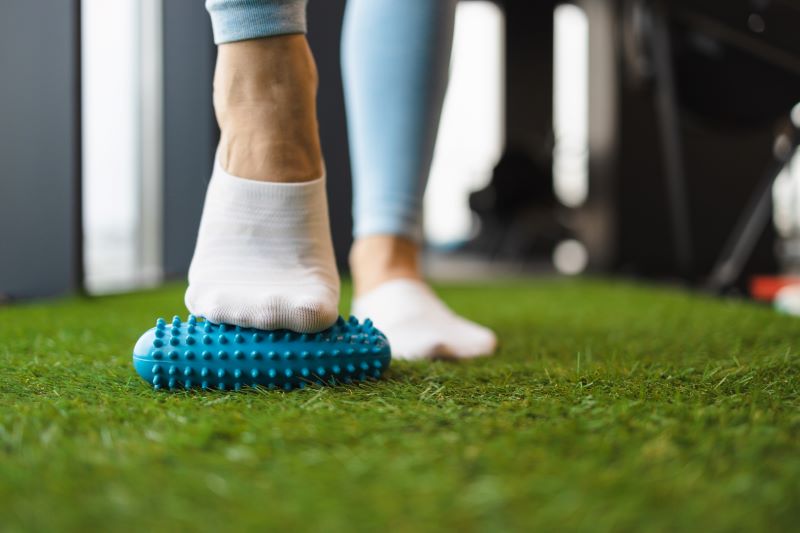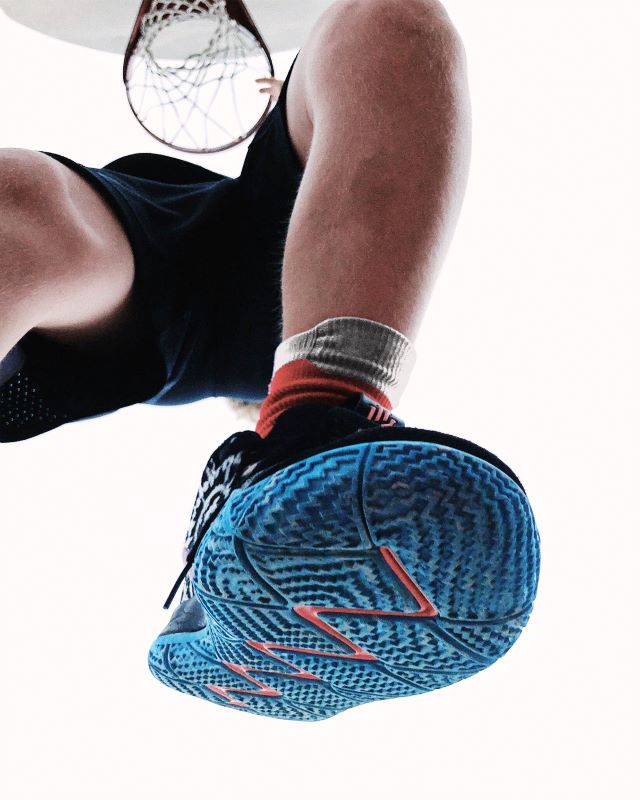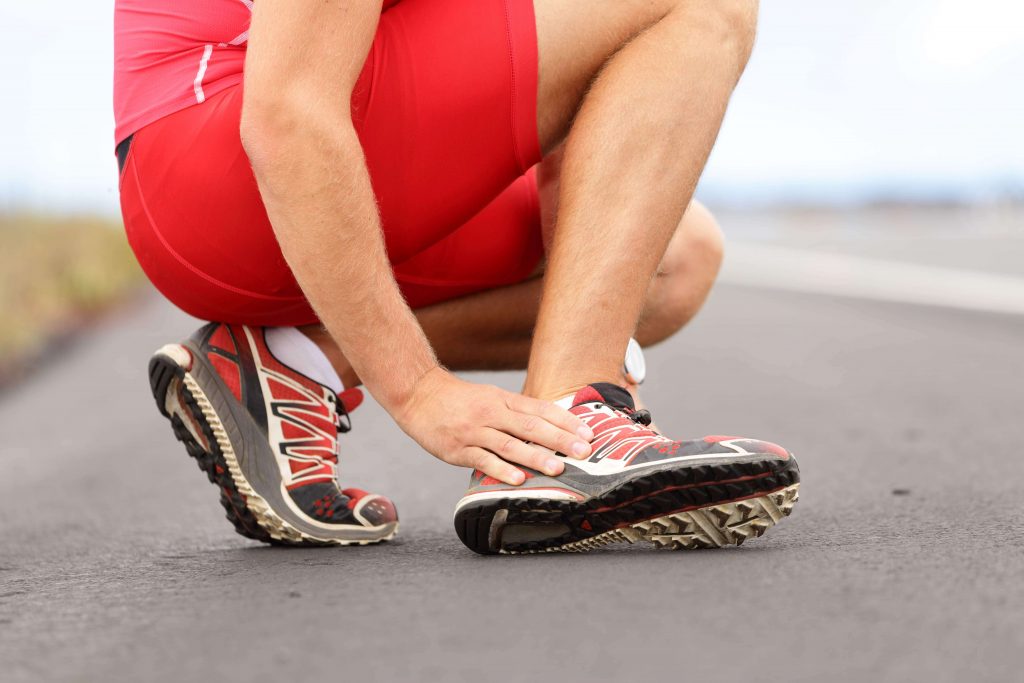Ways Compression Stockings Benefit Athletes
Compression stockings can benefit athletes by improving blood flow to and from their legs. It’s common knowledge that movement is medicine, but for athletes, repetitive, exhaustive, and strenuous activity can lead to poor performance and even injury. Compression stockings are good for helping athletes prevent or treat fatigue and muscle soreness, as well as swelling in the feet, ankles, and lower legs pre- and post-workout.
Because of these and other performance-boosting benefits, compression stockings are becoming more popular among athletes of all types. Behind the question of “Why do compression socks work?” is the idea that better blood flow to your muscles during exercise will help you perform better and recover more quickly.
There are a variety of styles and lengths available that are useful in many different use scenarios that benefit athletes. Knee-high socks are typically more comfortable and easier to put on, but thigh-high socks can be helpful for people with conditions that extend above the knee. Medical-grade compression stockings benefit athletes, provide the best fit, and have higher compression ratings, ranging from 20 mmHg to 40 mmHg.
If you’re new to this, there is a trick to wearing them that helps compression socks work: roll them inside out to the ankle, slip your feet in, then slowly roll them up your leg, smoothing out the fabric as you go. You can use rubber kitchen gloves to help you grip the stockings if you have trouble. A good rule of thumb is to choose a pair that feels secure, but not too tight. If your socks feel too tight, they can cut off blood flow and more.
 Three Primary Types
Three Primary Types
-
Graduated Compression Stockings
Compression is highest around the ankle and gradually reduces upward. These are ideal for mobility, have superior length and strength, and often require a professional fitting.
-
Thrombo-Embolic Deterrent (TED)
If you’re coming off an injury, TED or anti-embolism stockings reduce the possibility of developing deep vein thrombosis (DVT). TEDs also feature gradient compression, but these are for nonambulatory patients, so athletes, hopefully, shouldn’t need them.
-
Nonmedical Support Stockings
Nonmedical support hosiery doesn’t typically require a prescription. They deliver uniform compression that exerts less pressure than prescription compression stockings but still deliver some of the same benefits. That being said, your best option is for a doctor to prescribe the correct size and compression rating.
Benefits of Compression Socks
The benefits of compression socks are primarily attributed to their ability to promote better blood circulation. When your blood flows more efficiently, cells and nutrients get to the right parts of the body faster. This, along with choosing the right footwear, can drastically alleviate pain and swelling before, during, and after your workout.
Benefits of Compression Socks Include:
Increased
- performance
- circulation
- vein support
- lymphatic drainage
Reduced
- recovery time
- Swelling
- Pain
- lactic acid
 What are Compression Socks Good for?
What are Compression Socks Good for?
As an athlete, we’re sure you’ve experienced sore muscles that have somehow impeded your training. Any time you exercise, your body produces a waste product called lactic acid, and the longer it hangs out in your muscles, the sorer you eventually become. If you’re wondering, “What are compression socks good for?”, they’re good for relieving soreness during and after your workout by helping to reduce lactic acid and get you back to training–in addition to all those benefits listed above.
Compression stockings can benefit athletes and nonathletes alike. They aren’t just for hard-core athletes. You can take advantage of all that compression socks are good for during any activities that put a lot of stress on your legs: standing for long periods of time, long road trips, or a typical cardio maintenance day on the tread climber.
If competition demands you travel outside the Algonquin, IL area, podiatrists often suggest compression socks for people who travel on long flights. They’ll help keep blood flowing from your lower extremities to your heart during a long flight to prevent leg problems like edema. They also help to prevent blood clots from forming, which is especially important if you’re at risk for DVT or have varicose veins. They can be useful to relieve pain and inflammation in the legs during and after long workouts. In addition to compression socks being good for athletes’ performance, researchers have found that compression socks boost performance, and they have also found that the benefits of compression socks extend to your body recovering more quickly.
 Why Do Compression Socks Work?
Why Do Compression Socks Work?
There is actually a fair amount of science behind their amazing benefits and why compression socks work. Simply put, compression socks work by applying gentle pressure over your legs to promote blood flow, preventing the formation of clots, and relieving discomfort. These benefits allow athletes to boost performance during a long workout or race.
One of the most apparent reasons compression socks are good for athletes is they help keep you feeling fresher during and after training, so you can work harder, recover faster, and get back at it. Another way compression socks are good for athletes is by decreasing swelling after a marathon, triathlon, or other endurance events. The added pressure from the socks increases blood flow through your legs, supports fluid and oxygen flow back to your heart, hampers the production of waste material like lactic acid, and helps remove it from your muscles faster. Compression socks work because they help your body deal with the stress of athletic training, surgical recovery, and sometimes even just standing or sitting around too long.
You should always use compression stockings in accordance with the printed instructions or your doctor’s orders to get maximum results. Athletes and nonathletes alike should use compression socks with a healthy diet and supplements like fish oil, bromelain, alpha lipoic acid, and resveratrol to increase control of irritating inflammation and pain even more.
Whether you’re a professional athlete or just enjoy regular runs as a hobby, compression stockings benefit athletes and nonathletes by providing an extra edge during and after a tough session. They can help you recover faster, so you can get out there and enjoy the next one.

